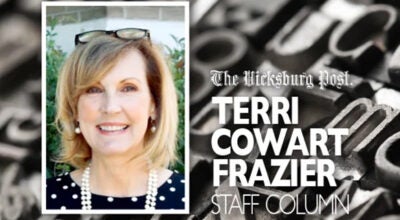Jacqueline House — like other museums — is a place where people talk
Published 11:58 am Tuesday, May 19, 2020
On Mothers’ Day, The Jacqueline House Museum of African American History in Vicksburg turned 25. It was on Mothers’ Day in 1995, the first since her passing, that we opened this door in her honor and for history.
Our anniversary celebration was muted, but fervent nonetheless as friends came up on the porch to sign the anniversary book, sit awhile and remember. We were all in our face masks, and the feast will come much later. Still, that Sunday was monumental.
The five who founded The Jacqueline House Museum were Tillman Whitley, curator; his wife and artistic partner, Dr. Dorothy Whitley; a well-known and revered school administrator and teacher, Dr. Josephine Calloway; city housing administrator and keeper of pictures, letters, and records in secret, thank God, Leona Barnes Stringer, and me. Jacqueline was my sister.
This small house on Main Street thus became the only museum of black history in Vicksburg and likely the state. It remains so today, though many efforts follow in our wake.
It is a genuine repository of our history in this place with pictures and paintings, letters and artifacts, historic documents and dissertations, books and letters found nowhere else. But it is also dynamic in the likelihood of reforming our view of that history, much needed and mostly overlooked.
Black history is not just an addendum. It’s not an added-on, though many see it that way. It’s not tourist fare adding to the appeal or something that’s praised, but apart. Black history is a complex dynamic, “a complicated intervention” in the history of this country and this state. It’s in our DNA.
But the architectonic structures of tourism are just access and availability. We want easy things to show, easy ways to get there and easy things to applaud.
Some years ago, I spoke at a lawyers’ luncheon and told them they knew the same stories that I did. I didn’t need to repeat them. They didn’t need to hear them again. What we needed was to reflect on Flannery O’Connor’s appropriation of Teilhard de Chardin; that “everything that rises must converge.”
We don’t ascend in parallel lines, in “separate but equal” juxtaposition. Parallel lines never meet. There is no point to “rising” if what’s rising doesn’t converge. You don’t go up, you don’t rise endlessly. You bend, you lean, you converge.
The tourist dynamic doesn’t do that. It admires but stays at a distance.
We must admit as well as admire.
One thing that’s always bothered me is that there’s no shared history here. White historians, white professors, white writers, all have penned great books and things about black people and our struggles. But they hardly ever write — don’t even seem to remember — and won’t admit to their own struggles; to living in a house with Klan members, perhaps; with Klan robes hanging in the closet. And with their own difficult moves away from people whom they loved.
Museums have to also be places where people talk.
The Jacqueline House is one.
Yolande Robbins is a community columnist for The Vicksburg Post.




